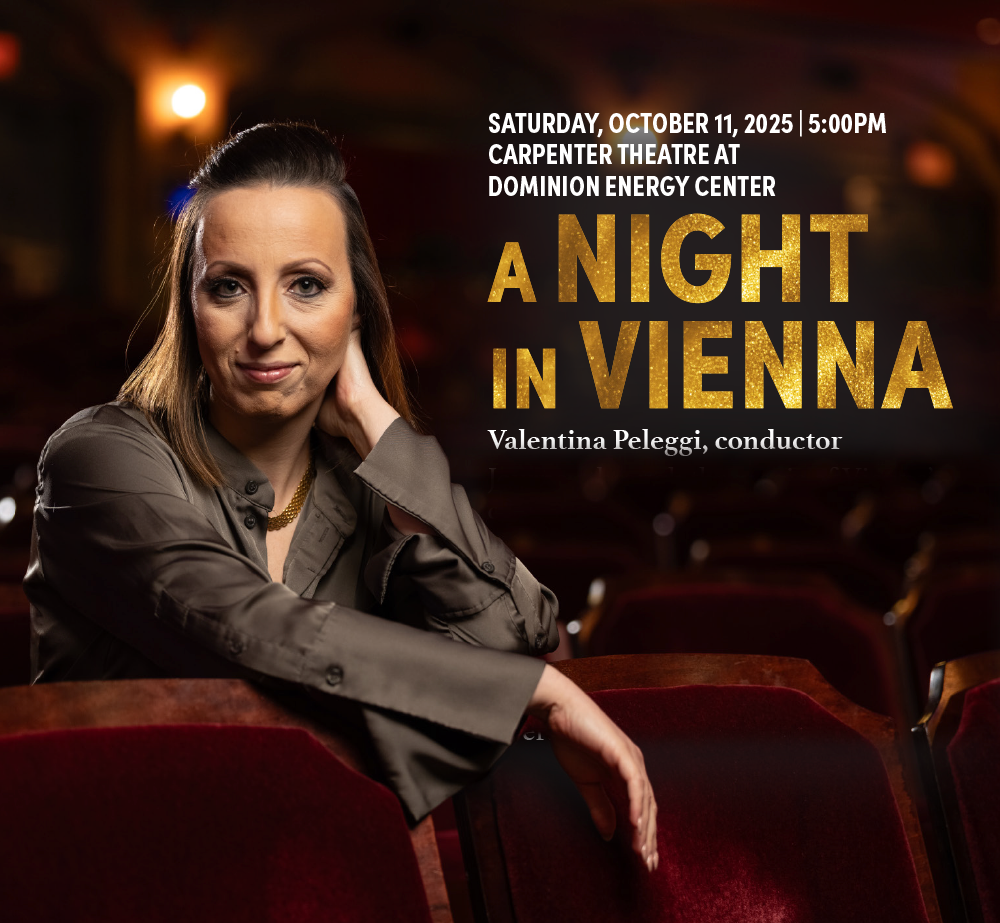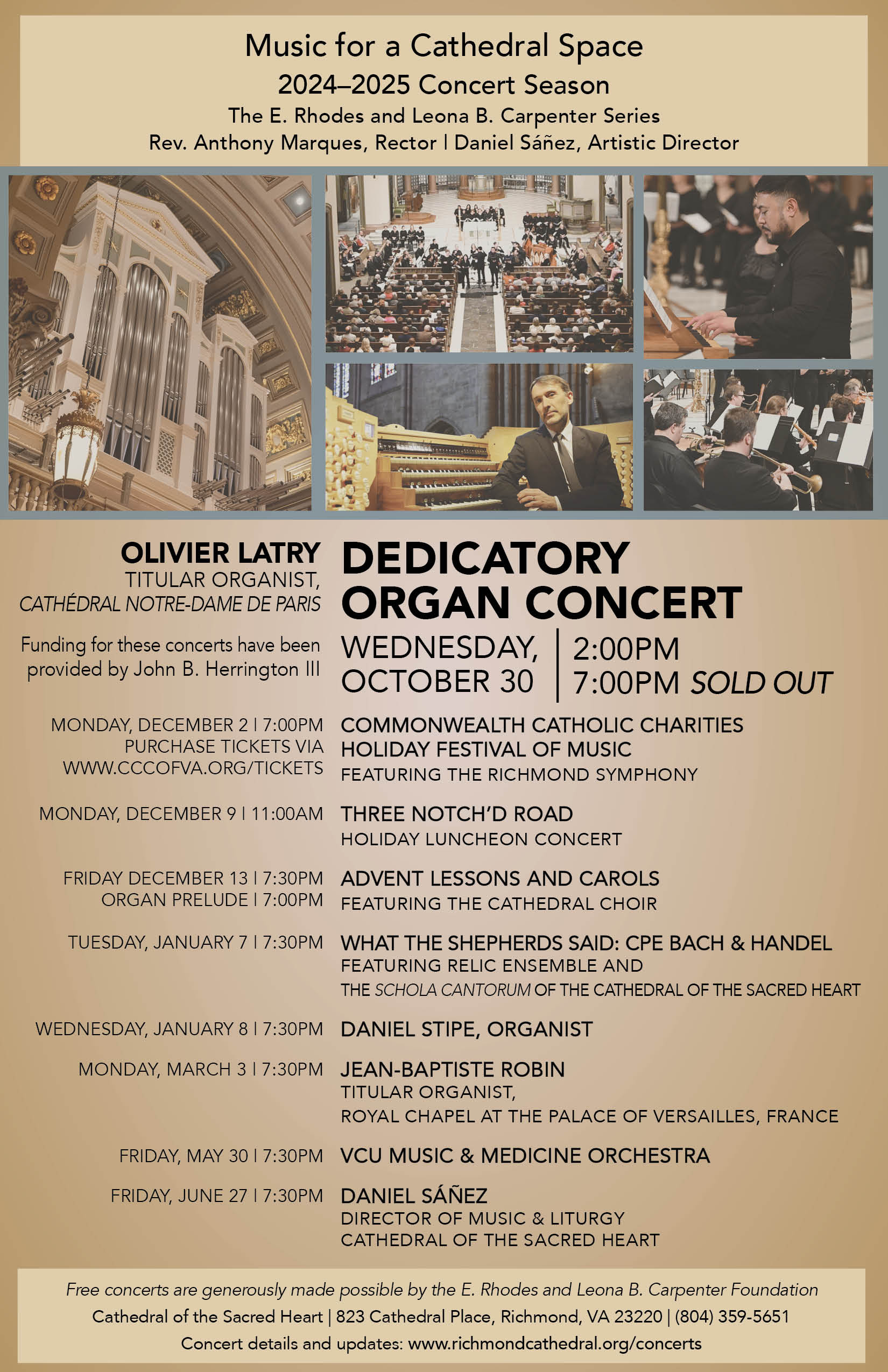
A Night in Vienna
Saturday, October 11, 2025 | 5:00 PM
If you pay a visit to Vienna’s Central Cemetery, you’ll find a “Musicians’ Corner” where some of the iconic figures of Western classical music are laid to rest: Beethoven, Schubert, Johann Strauss II, and Brahms all lie buried within close proximity. It’s a reminder that this city was more than just their home. It was a creative magnet that drew composers from all over.
“All of these composers were drawn to Vienna or already living there,” says Music Director Valentina Peleggi. “A Night in Vienna traces a journey that starts off with a variety of dance forms suggesting the ethnic diversity of the Austro-Hungarian Empire. It then celebrates how these influences came together and evolved into something new – the waltz – which became a symbol of Vienna itself as a cosmopolitan capital.”
The first half of the program thus presents an eclectic mix of styles and influences, from reworkings of regional folk idioms to evocations of Hungarian and Turkish music. These pieces show how composers engaged with the multicultural mosaic
they encountered, both inside the Empire and beyond.
Our snapshot of this shifting musical landscape begins with a bright, festive march Mozart composed shortly after relocating to Vienna in the 1780s, likely for a public or semi-public celebration. Following it is an orchestral arrangement of the famous “Turkish” rondo finale he originally wrote as part of a solo piano sonata—a rhythmically infectious piece that reflects how Europeans perceived the military music of the Ottoman Empire, a style that was then very much in vogue in Vienna.
Marche militaire by Franz Schubert, who was born and raised in Vienna, also started out as music for piano (actually, piano four hands). It was written while on a music teaching stint for an aristocratic family in a Hungarian corner of the Empire. For all its mock martial grandeur, the piece sways with a rhythmic lilt that’s hard to resist.
A generation older than Schubert, Beethoven paid tribute to the popular social dances of the day with a set of contradances – group dances of French and English origin – written not long after his move to Vienna to study with Haydn. The tune he used for No. 7 proved to have remarkable staying power: it later appeared in his ballet The Creatures of Prometheus and ultimately found immortal form as the theme for the finale of his revolutionary Eroica Symphony.
That Hungarian thread continues with Brahms’s Hungarian Dance No. 5, the most famous of a set he originally composed for piano four hands in the late 1860s. The piece pulses with the rhythmic drive and fiery flair of Romani-influenced dance music – the kind of melodies that once spilled from café orchestras across the city.
Like Dvořák, Franz von Suppé emerged from outside the dominant Germanic tradition within the multiethnic Habsburg Empire. He became famous for his effervescent contributions to Viennese operetta, such as 1866 work Light Cavalry. The galloping rhythms and theatrical flair of its overture have made the piece a concert hall favorite. We hear the overture’s rousing finale to close the first half of our program.
Vienna’s famous City Park holds a gilded statue of Johann Strauss II, who is shown merrily playing his violin. Long one of the most photographed landmarks in this city of music, the monument is drawing even greater attention as the world celebrates the 200th anniversary of Strauss’s birth later this month.
The Overture to Die Fledermaus is a dazzling distillation of everything audiences adore about Strauss: irresistible melody, rhythmic vitality, and a flair for drama laced with humor. The title – which means “The Bat” – refers to a costume worn at a lavish masquerade ball, where mistaken identities and fizzy intrigue unfold to a deliriously charming score now inseparable from Vienna’s New Year’s celebrations.
Johann Strauss II was born into a remarkable musical dynasty. His father had laid the foundation for the family’s association with the Viennese waltz, transforming a popular folk dance into a sophisticated form of entertainment. But it was Johann Junior who ultimately eclipsed not only Papa Strauss but also his composer brothers, Josef and Eduard, in both popularity and artistic Influence.
Strauss’s naturally flowing melodies have a way of transporting listeners straight into the heart of Vienna: savor the lyrical grace and elegance of Voices of Spring and Roses from the South. Though best known for his waltzes, the prolific Strauss additionally composed dozens of polkas, galops, and quadrilles – lively dance forms that were staples of the Viennese ballroom. He captures the cheeky bustle of Viennese gossip in the Tritsch-Tratsch (“chit-chat”) Polka and conjures up atmospheric spectacle in the thunderously brilliant Unter Donner und Blitz. As for the waltz itself, Strauss expanded it into something grander and more symphonic by adding richly orchestrated introductions, sweeping melodies, and dramatically contrasting interludes. His concert waltzes often weave together several distinct dance sections, creating a seamless sequence that elevates the form from ballroom diversion to miniature tone poem.
The Blue Danube – a hit at the 1867 Paris Exposition – has become the quintessential Strauss waltz. It begins with a dreamy, choral-style introduction (whose original version in fact included a chorus) before unfolding into a sequence of five elegant waltz themes, each with its own character, yet artfully linked together. The Blue Danube has become virtually synonymous with Vienna itself, though its modern fame owes much to Stanley Kubrick’s inspired decision to use Strauss’s graceful dance rhythms to accompany scenes of orbiting spacecraft in 2001: A Space Odyssey.
But Papa Strauss gets the final say. His Radetzky March from 1848 – written to honor a victorious general – has long outlived its military origins to become a rollicking New Year’s tradition, complete with audience clapping and unflagging good cheer. It’s a rousing finale from the original Strauss in the waltz hall of fame.
(C)2025 Thomas May
